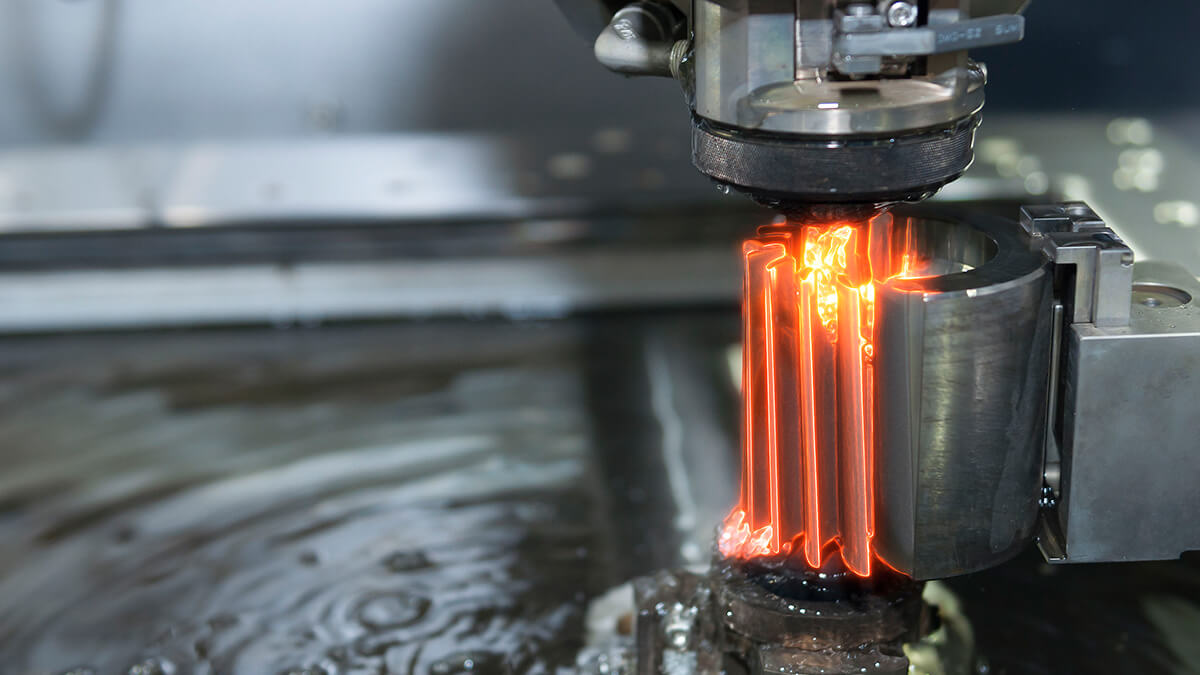Electrical Discharge Machining (EDM) has long been a cornerstone of precision manufacturing, enabling the creation of intricate and complex parts with unparalleled accuracy. In recent years, the convergence of Internet of Things (IoT) technology and automation has ushered in a new era for EDM, transforming traditional machining processes into smart, connected systems. Automation plays a pivotal role in this transformation, streamlining processes and minimizing human intervention. From enhanced monitoring and diagnostics to improved efficiency, the integration of these technologies is paving the way for more efficient, productive, and predictive manufacturing.
IoT Sensors and Their Role in EDM Monitoring
One of the key elements driving the transformation of EDM into a smart system is the integration of IoT sensors. These sensors play a pivotal role in monitoring various aspects of the machining process in real-time. Temperature, vibration, and wear sensors, strategically placed on the EDM equipment, provide continuous data streams that enable precise control and optimization. By collecting and analyzing this data, manufacturers gain valuable insights into the performance of their machines, helping to prevent potential issues before they escalate.
For example, temperature sensors can monitor the heat generated during machining, ensuring that the equipment operates within optimal temperature ranges. Vibration sensors can detect irregularities that may indicate tool wear or other issues, allowing for proactive maintenance. These IoT sensors not only enhance the precision of EDM but also contribute to a more sustainable and cost-effective manufacturing process.
Automation in Electrode/Tool Changing and Workpiece Handling
Traditional EDM setups often involve manual operations for electrode/tool changing and workpiece handling, leading to downtime and potential errors. Automation plays a crucial role in enhancing the efficiency of Smart EDM systems, reducing human intervention and improving overall productivity.
Quick and precise replacement of worn-out electrodes or tools during the machining process not only saves time but also enhances the consistency and accuracy of the produced components. Workpiece handling, too, benefits from automation as advanced robotic systems can precisely position and secure the workpiece, allowing for continuous and precise machining, further optimizing the production workflow.
Predictive Maintenance and Condition Monitoring in Smart EDM
Predictive maintenance is a cornerstone of smart EDM, ensuring that equipment downtime is minimized and potential issues are addressed before they result in failures. By combining data from IoT sensors with advanced analytics, manufacturers can predict when maintenance is required, preventing unexpected breakdowns and extending the lifespan of EDM equipment.
Condition monitoring in smart EDM involves real-time analysis of machine performance metrics. Any deviation from predefined parameters triggers alerts, allowing operators to take corrective actions promptly. For instance, if vibration levels exceed acceptable limits, the system can automatically adjust machining parameters or schedule maintenance, preventing damage to the equipment and ensuring consistent product quality.
Real-World Examples of Industries Benefiting from Smart EDM
The adoption of smart EDM is not confined to any specific industry; rather, it spans a wide range of sectors, each benefiting from the integration of IoT and automation in unique ways.
Aerospace Industry: Precision is paramount in aerospace manufacturing, and smart EDM systems have found a natural fit in producing complex components for aircraft and spacecraft. The ability to monitor and control machining processes in real-time ensures the highest level of accuracy, meeting stringent industry standards.
Medical Device Manufacturing: The medical industry demands intricate and precise components for devices such as implants and surgical instruments. Smart EDM not only enhances the precision of machining but also enables traceability and documentation, crucial for compliance with regulatory requirements.
Automotive Manufacturing: In the automotive sector, where mass production meets stringent quality standards, smart EDM systems contribute to efficiency and consistent electrode/tool changing and workpiece handling, ensuring a continuous and reliable manufacturing process.
Electronics and Semiconductor Manufacturing: Where miniaturization is key, Smart EDM is playing a pivotal role in the production of intricate microchips and electronic components with micron-level accuracy.
Smart EDM, driven by the integration of IoT and automation, represents a significant leap forward in the world of precision manufacturing. The ability to monitor, analyze, and optimize EDM processes in real-time not only enhances efficiency and productivity but also reduces downtime and maintenance costs.







.png)






